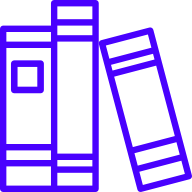What is spiral learning?
Abeka’s spiral learning approach starts with the basics and builds to deeper understanding as age-appropriate. There is a constant emphasis on review to master knowledge, reinforce specific concepts, and then increase the level of difficulty. Every year, concepts from various disciplines are reintroduced and applied in new ways. Therefore, every time a child relearns material, what they have learned is reinforced. This means children have multiple opportunities to master what they learn.
Did you know?
Research shows that in most academic settings, children forget 50% of what they learn in just a few days. This is known as the “forgetting curve” and is a key reason why children struggle in school. Repetition shortens the forgetting curve, making the spiral learning method effective in helping students retain more of what they learn.
Use spiral learning
The Spiral Method is a core part of the entire Abeka curriculum. Why? Because the spiral learning method is not just a whim. It is built on proven ideas and uses time-tested methods.
Remember more

Cramming will not allow children to consolidate what they have just learned. The spiral learning teaching method proves that repetition can make people retain knowledge.
Children will...
Fast forward

Because the curriculum is self-building, your child already has a solid foundation when they are introduced to more complex ideas.
More confident

A major benefit of spiral learning is that you and your child will have more than one opportunity to master a concept. This boosts your confidence!
Understand the difference

Unit Mastery Learning
Unit mastery learning, or “block learning,” is the most commonly used teaching method. Under this structure, children need to fully understand one concept before moving on to the next.

Spiral Learning
Repetition is the key to learning. Because a concept doesn’t appear just once or in just one way, you give your child multiple chances to succeed. Concepts are truly learned and remembered.